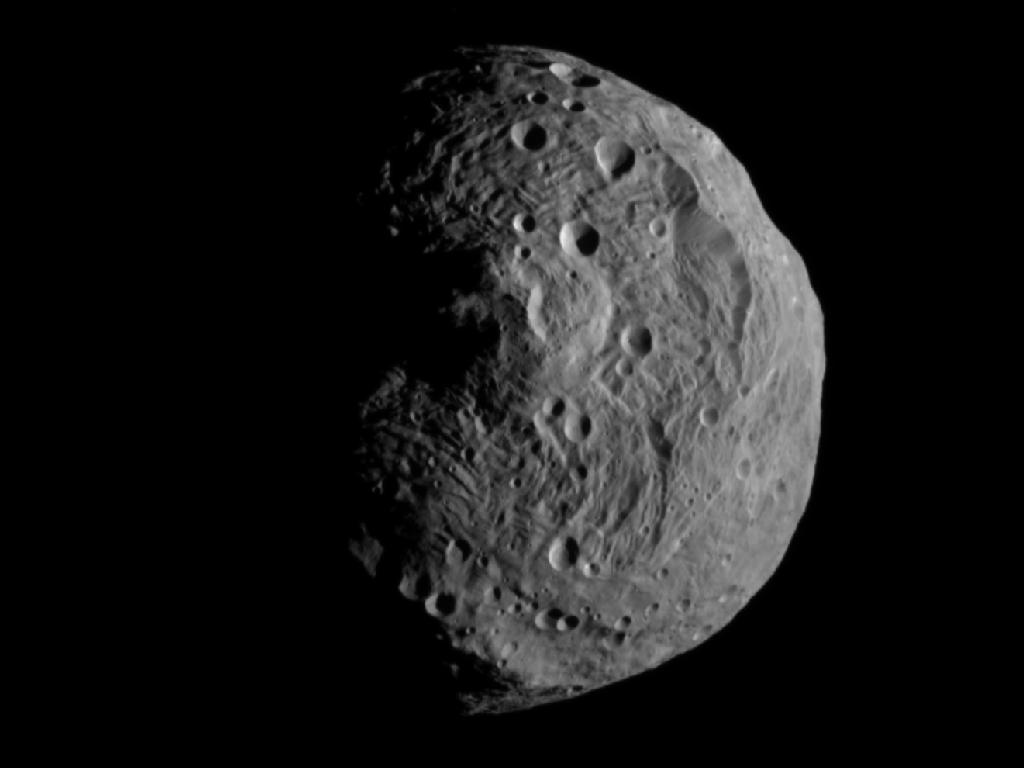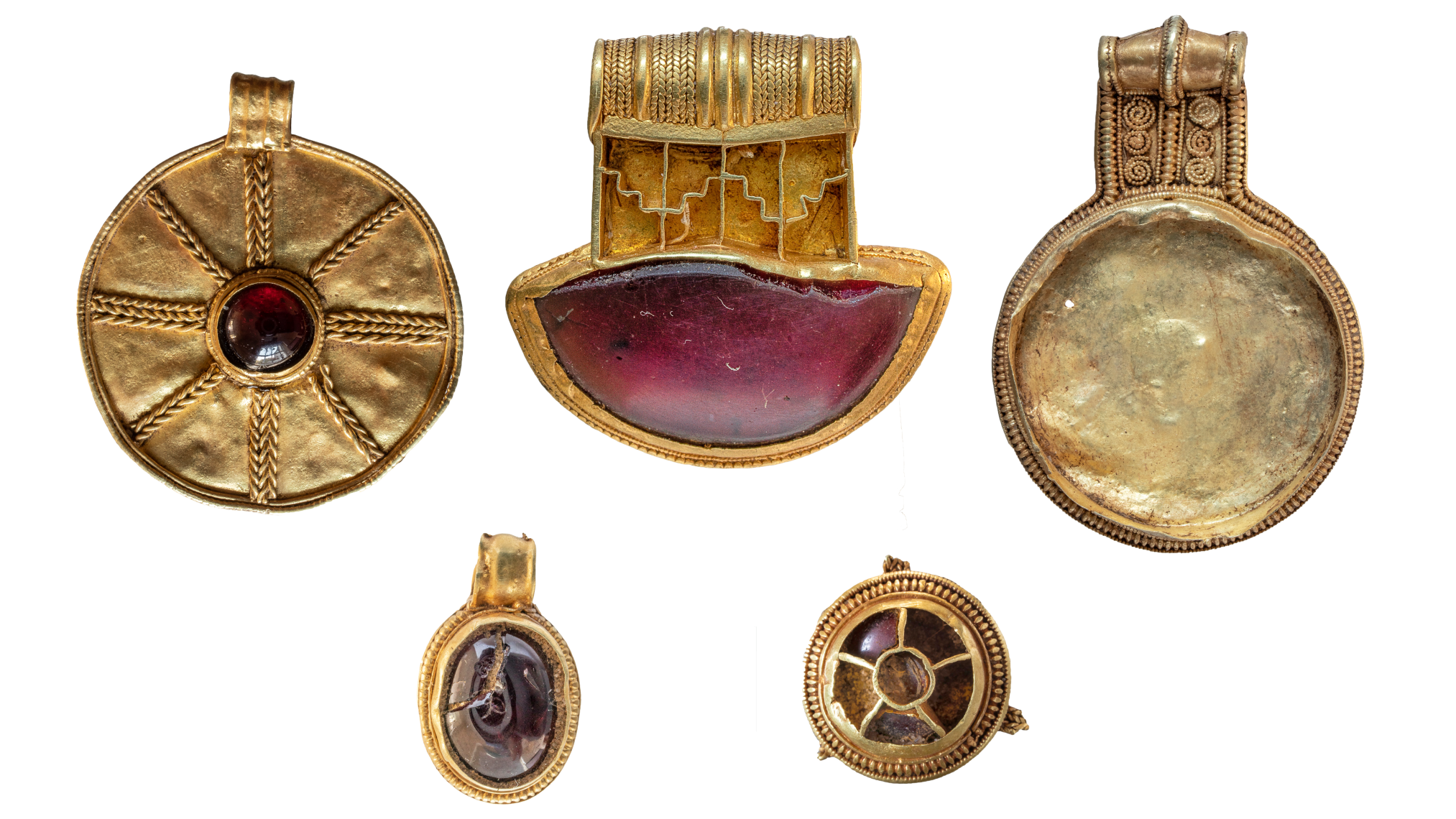Young Asteroids Got Smacked Around Just As Earth Did

Shortly after Earth and Mars were born, they found themselves in a lengthy bout of cosmic bumper cars with comets and space rocks. A new study now suggests the asteroids of the inner solar system were also subjected to such impacts.
An international team of astronomers analyzed the chemical compositions of Vesta and several other asteroids and found "highly siderophile elements" – chemicals that bind tightly to iron – not only in the cores of the space rocks but in their mantles.
The presence of the iron-loving elements outside the core suggests they were deposited there by impacts with other bodies after the asteroids had formed, but still early in the history of the solar system, said study lead author Christopher Dale, a postdoctoral researcher at England's Durham University.
"This process of late accretion is recognized and well-accepted for Earth, the moon and Mars, but it wasn't clear if it was a process that was widespread," Dale told SPACE.com. [Our Solar System: A Photo Tour of the Planets]
Building blocks of a planet
Scientists think planets are formed by a process known as core accretion. As giant disks of gas and dust are swirling around nascent stars, the grains of dust bond together to form objects called planetesimals that collide and stick together to make even larger clumps of material. Once these emerging bodies accumulate enough mass, their gravity begins to suck in gas and they eventually become planets.
Since siderophile elements bind tightly to iron, any that were present in the early stages of a planet's formation would have been pulled into the body's iron core. So the presence of these iron-loving elements in the mantles of Earth, the moon and Mars must have been delivered later, after the process of core formation ceased.
Get the world’s most fascinating discoveries delivered straight to your inbox.
The asteroids in the inner solar system – including Vesta, which is large enough that many researchers call it a protoplanet – were done forming in less time than the planets, with their cores accreting at lower pressures and temperatures.
"Within the first few million years, but certainly 10 million years after the start of the solar system, these bodies had accreted and formed their cores," Dale said. For "a planetesimal like Vesta, during core formation at lower pressure and temperature, we'd expect almost all of the highly siderophile elements in the core. But that's not what we find."
Instead the researchers also found highly siderophile elements in the mantles, indicating that space rock impacts were not unique to larger planets and moons. The findings also suggest this process lasted longer than thought.
"It tells us that the process of accretion was certainly not a finite event; it continued for many millions of years," Dale said. "There also must have been lots of small or medium-size bodies present in the solar system for these collisions to have occurred over a range of time scales."
Shaking up the solar system
Astronomers think that about 600 million years after the solar system was formed (or about 4 billion years ago), a vast expanse of space beyond the orbit of Neptune, called the Kuiper Belt, was shaken up by the migration of the gas giants Jupiter and Saturn.
This gravitational disruption scattered comets and other icy bodies in the Kuiper Belt, flinging many into interstellar space but also throwing some onto orbital paths that wreaked havoc on the inner planets of the solar system.
This period, called the Late Heavy Bombardment, lasted until 3.8 billion years ago, during which time comets pummeled the side of the moon that faces Earth and created the contrasting light and dark patches on the lunar surface that are seen today.
Comets that hit Earth during the Late Heavy Bombardment were thought to have deposited water and carbon on the planet, astronomers have said.
But the results of the new study suggest that a lengthy round of impacts preceded the Late Heavy Bombardment. This would account for the highly siderophile elements seen on Earth, the moon, Mars and early asteroids.
"We're not relating the Late Heavy Bombardment to the increase in these highly siderophile elements," Dale said. "What this study shows is that the vast increase was probably prior to the Late Heavy Bombardment. I'm not sure that the amount of material in the Late Heavy Bombardment is great enough to explain highly siderophile elements on Earth, so much of the material was probably derived from fairly large impacts early on in its history."
The researchers plan to continue studying other bodies in the solar system to build upon these findings.
"We're certainly interested in looking at other bodies to see what they tell us about these early processes," Dale said.
This story was provided by SPACE.com, a sister site to LiveScience. You can follow SPACE.com staff writer Denise Chow on Twitter @denisechow. Follow SPACE.com for the latest in space science and exploration news on Twitter @Spacedotcom and on Facebook.

Denise Chow was the assistant managing editor at Live Science before moving to NBC News as a science reporter, where she focuses on general science and climate change. Before joining the Live Science team in 2013, she spent two years as a staff writer for Space.com, writing about rocket launches and covering NASA's final three space shuttle missions. A Canadian transplant, Denise has a bachelor's degree from the University of Toronto, and a master's degree in journalism from New York University.



